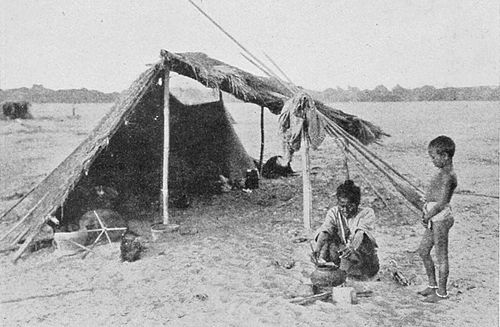screen are formed by dhani plantations, especially in the smaller creeks. In other places again, cultivation has been carried to the edge of the stream and the screen of mangroves is replaced by a narrow ridge on which grass or paddy is seen growing above the water. At neaptide, or later in the season when the paddy has grown tall, the edge of the land is more marked, but navigators are still glad to have posts and marks set up here and there to mark the course of the stream through what is apparently one great lake. The more northerly parts of the tidal
area are now completely cultivated in wide continuous stretches of paddy fields, broken up by streams with a fringe of jungle along their banks but including no extensive uncultivated parts. Travelling towards the south, the colonization becomes steadily more recent, more and more uncultivated land is met until at length cultivation is in rare isolated patches among almost continuous kanazo[1] jungle. Everywhere then, the background
- ↑ "The kanazo is essentially a mangrove; although it attains the height of eighty to a hundred feet it stands upon soft tidal mud, supporting itself by wide-spreading roots, from which spring breathers which stand up above the surface of the ground and by means of their large stomata enable the roots to obtain the air which they require but could not get in the water-logged mud in which they grow."

